‘Empire follows Art & Not Vice Versa as Englishmen suppose.’ So claimed William Blake in his well-known annotation to Joshua Reynolds’ Discourses on Art of 1778. If an exhibition was calculated to challenge Blake’s counterintuitive statement, it is ‘Forgotten Masters: Indian Painting for the East India Company’, currently at the Wallace Collection, coincidentally at the same moment as the major Blake exhibition on show a couple of miles south, at Tate Britain (and where empire, by contrast, is decidedly understated). The Wallace’s show brings to public attention, largely for the first time, the paintings and drawings of Indian artists working in the violently transformative era, from the 1760s to the 1850s, when the Indian subcontinent was shifting increasingly from Mughal to British imperial control. It has been guest-curated by William Dalrymple, the leading historian of British India, who has brought together a rich array of works on loan from a wide range of public and private collections, much of which has not been on display in the UK before, and certainly not in the environment of an art institution such as the Wallace.
The exhibition’s main aims are two-fold: firstly, to recover and reevaluate the art of these ‘forgotten masters’ (no female artists are included), hitherto unjustly dismissed as ‘Company School’ painters, merely jobbing servants of a colonial regime; and secondly, to demonstrate how these artists adapted their techniques, subject matter and painterly practice, inherited from Mughal traditions, to meet the demands of East India Company patrons across a variety of geographical cultural centres and social and professional contexts. Accordingly, artistic innovation is to be understood as a consequence of imperial conquest, and (pace Blake) not the other way round. The exhibition is laid out clearly and logically, with each room more or less devoted to an individual artist or artistic circle, a particular cultural centre such as Lucknow or Delhi, and a specific genre such as natural history painting, or representations of everyday Indian society and culture, through its castes, professions, buildings and so on.
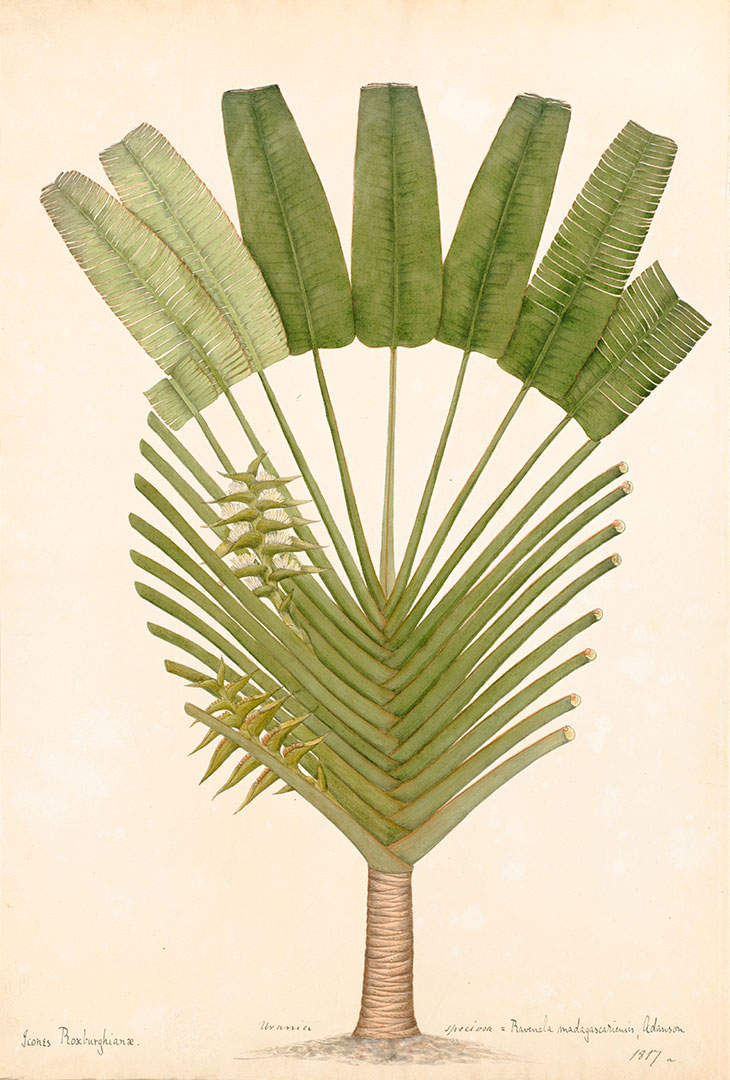
Traveller’s Palm (c. 1807), attributed to Vishnupersaud. © The Board of Trustees of the Royal Botanic Gardens, Kew
In the first of its aims the exhibition is brilliantly successful: the sheer quality of the work on view, covering a wide range of genres and formats, from botanical drawing to group portraits, is strikingly consistent and frequently breathtaking. The set of drawings of Indian birds and animals, for example, produced in the years around 1780 by Shaikh Zain ud-Din for Sir Elijah and Mary, Lady Impey, are feats of wondrous virtuosity, in their combination of microscopically observed detail together with the evocation of animation and movement. The Impey albums are perhaps the best known of the works on display here, yet the exhibition provides them with a new dimension by contextualising them with other natural history studies such as the similarly virtuoso botanical drawings by the barely known artists Vishnupersaud and Chuni Lall, borrowed from the collections of botanic gardens at Kew and Edinburgh but here displayed as remarkable artworks in their own right. Although laid out on blank backgrounds and without shadow, in the conventional manner of 18th-century specimen drawings, Vishnupersaud’s Himalayan Fan Palm (c. 1825) and Traveller’s Palm (c. 1807) differ significantly from their Western prototype, in being carefully – even wittily – composed to fill the dimensions of the page, lovingly and meticulously observed, and rendered with a refined elegance stemming from a calligraphic technical dexterity.
Yet, by comparison even with these remarkable drawings, Zain ud-Din’s pictures for the Impeys stand out as still more extraordinary, and much more than a set of straightforward representations of Indian flora and fauna for interested British residents, as they have conventionally been characterised. Their scale alone indicates that they are prestigious and ostentatious commissions, on a par with anything commissioned from Western artists in India such as Johan Zoffany or William Hodges. The Sarus Crane, for example, is done on a single sheet of paper almost a metre in height, which the bird fills entirely with its vivid vermilion legs and head, and exquisitely detailed rendering of grey wing feathers, each strand minutely observed and drawn. There is a near-perfect harmonisation here of obsessive attention to detail with overall awareness of the crane’s form, bodily structure, weight and poise, together with grace of design, line and formal composition. It has an almost devotional quality to it, a profound veneration for another living creature. A similar sense of awe comes through in the same artist’s Cheetah, shown in profile on a similarly sized sheet of paper, on which the animal’s measurements are also noted, indicating that the picture is almost life-size, the cheetah’s power and tension barely contained within the framing edges of the page. As a traditional hunting animal for the Mughal aristocracy, Zain ud-Din’s Cheetah is less a natural history drawing and rather an icon of power, both of the natural world and of Mughal magnificence. Such an image of the animal world of India offers insight into other animal representations in British-Indian culture, notably Tipu Sultan’s contemporaneous adoption of the tiger as the talisman for his rule over Mysore and his ongoing conflict with the British, which would culminate in his defeat at the Battle of Seringapatam in 1799, extending British dominance across southern India.
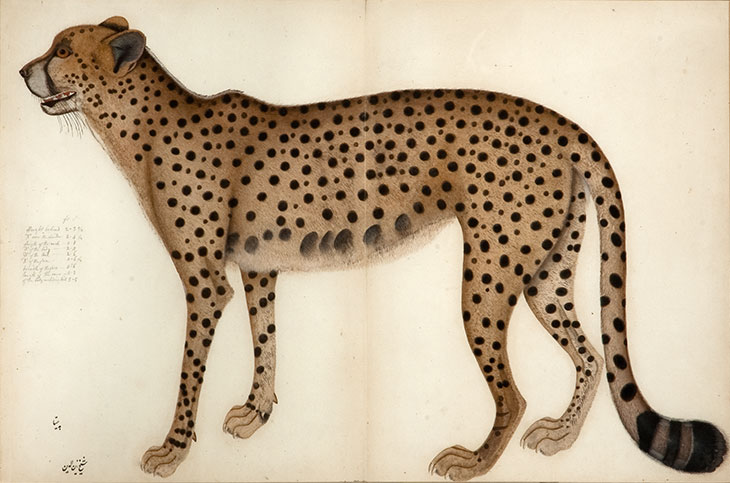
Cheetah (c. 1780), Shaikh Zain ud-Din
This is where the second aim of the exhibition, in tracing the impact of British colonial power on Indian artists, becomes slightly problematic. In focusing exclusively on providing space for the neglected work of Indian artists active in this period – in itself a highly commendable thing to do – the exhibition loses sight of some of the complex artistic and cultural interactions and hybridisations between Indian artists and their British or Western counterparts working there, who were also in pursuit of East India Company patronage. If the Indian artists shown here adapted their practices to include Western techniques and modes of representation, then European artists like Zoffany or Hodges were certainly interested in and influenced by the tradition of Mughal miniature painting. Company commercial and political interests are implicit throughout the exhibition, for example in drawings of coffee or opium, which were staple commodities for Company business and in the case of the latter, vitally and controversially contributed to the British-Indian economy; or else in the anonymously drawn An Aroid Leaf (c. 1775), painted directly into an accounts book pre-drawn with ledger lines, where the fusion of artistic and economic interests could hardly be more aptly symbolised. In other pictures too, particularly the representations of Indian communities, castes, professions and social life, the hybrid character of British-Indian cultures in the context of Company commerce and politics is discernible – most obviously in the brilliantly observed portraits of Indian recruits to British sepoy regiments by Ghulam Ali Khan and his circle. But although this issue is treated in the thoughtful series of scholarly essays in the excellent accompanying catalogue, it could be more fully explored and brought out in the exhibition itself.
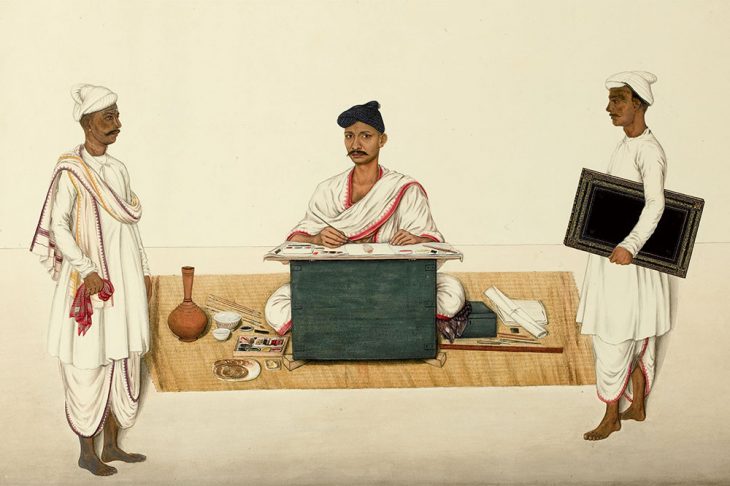
Self-portrait (c. 1832–35), Yellapah of Vellore. Photo: courtesy Sotheby’s
It would have been useful to observe first-hand, for example, the affinity between the group portraits on display here of courtiers and servants associated with the Raja of Patiala made at the time of William Fraser’s diplomatic visit there in 1817, to arbitrate in a territorial dispute between the Raja and the British, and portraits made at the court of Madhu Rao Narayan, in a similar diplomatic context, by James Wales in the early 1790s for Charles Warre Malet during negotiations for a treaty with the Marathas. It would be worth enquiring if the psychologically penetrating work of Fraser’s Indian artist had comparable diplomatic functions or meanings, rather than simply being a visual record. Likewise, the 19th-century artist Yellapah of Vellore’s extraordinary quasi-taxonomic depictions of pujaris, ascetics and sepoys, rendered as studies of costumes and social types, would benefit from a comparison with the encyclopaedic print project by Baltazar Solvyns in the 1790s to document ‘the Manners, Customs and Dresses of the Hindoos’. This would demonstrate not only how much more sophisticated the Indian artist’s work is, but also how the visual classification of the almost uncontainable variety of Indian society engaged artists across the spectrum of colonial culture but with different forms of agency and power. For what comes through most strongly in the representations of Indian individuals and groups is the sense of the artists’ own sympathies for, and identification with, the subjects of their portraits, and the sense of alternative, subaltern indigenous life and culture beyond the reach of British colonial scrutiny and administration. The exhibition does very important work in identifying and naming both artists and sitters wherever possible, but this assertion of Indian agency could have been highlighted still more vividly by contrast with the largely objectifying depictions of Indians, usually in the guise of servants, made by Western artists.
The final room perhaps best exemplifies the difficulties with the narrative of the progressive Westernisation of Indian art in the 19th century. It is devoted to just three works by the Bengali artist Sita Ram, from the album of views done in 1814–15 for the Marquess of Hastings. A text panel claims they show the growing influence of Western painterly techniques, in their sketchy, impressionistic style. Yet such a statement conflicts with the exhibition’s own chronology, with Ghulam Ali Khan and the artists in his circle maintaining a highly sophisticated hybrid style, merging Mughal and Western characteristics, into the 1830s and 1840s. Rather, Sita Ram’s paintings seem to be made in conscious imitation of earlier British landscape artists in India like Hodges and Thomas and William Daniell. We know that Indian artists were also employed to make copies or free adaptations of paintings and prints by these British artists; it would have been useful to include some of this material to enquire what sort of purchase the adoption of overtly Western painterly style might have had for Indian artists at this period and under what circumstances. (Again, such issues are considered in the highly informative and nuanced catalogue essays, if not the exhibition itself.) Instead, much of the wall space of the final room is covered with blown-up details from Sita Ram’s paintings, which while nicely mirroring the use of scaled-up details in the opening room, are here somewhat redundantly decorative. In the opening room, by contrast, the greatly magnified figure of an artist’s assistant taken from Yellapah’s self-portrait in the Vellore album, reproduced on the wall opposite the entrance, immediately announces the presence, identity and agency of the Indian artist, introducing the principal theme of the exhibition with wit and flair. It also draws attention to the extraordinary minutiae with which the portrait miniatures are rendered: it is remarkable how well the detail of the small-scale original translates to a life-size figure.
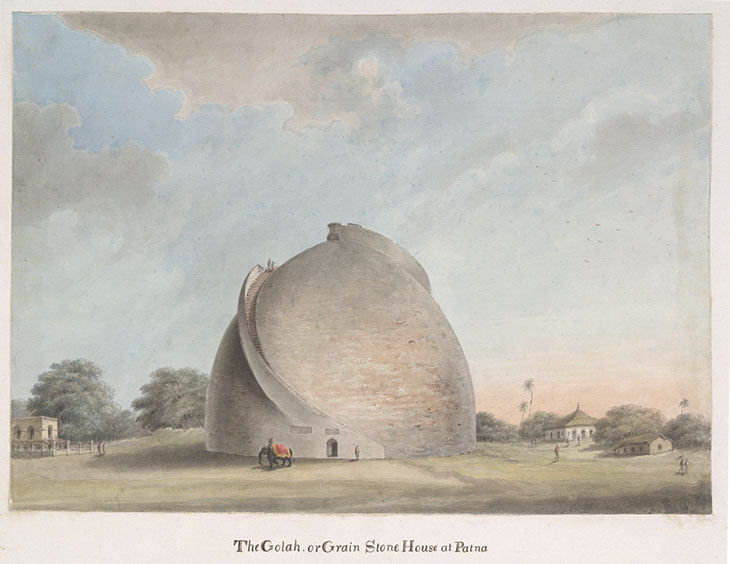
The Great Gola on the Maidan at Bankipore (1814–15), Sita Ram. © The British Library Board
However, these are minor considerations in the face of all that is presented here in rich, revelatory and intellectually stimulating ways. This long-overdue exhibition offers an important and very welcome corrective to the conventional understanding of the significance of Indian art and artists to British imperial experience, and more broadly of the centrality of empire to the history of British culture. It is not so much that ‘empire follows art’, or vice versa, but that they are indissolubly integrated with each other.
‘Forgotten Masters: Indian Painting for the East India Company’ is at the Wallace Collection, London, until 19 April.
Unlimited access from just $16 every 3 months
Subscribe to get unlimited and exclusive access to the top art stories, interviews and exhibition reviews.

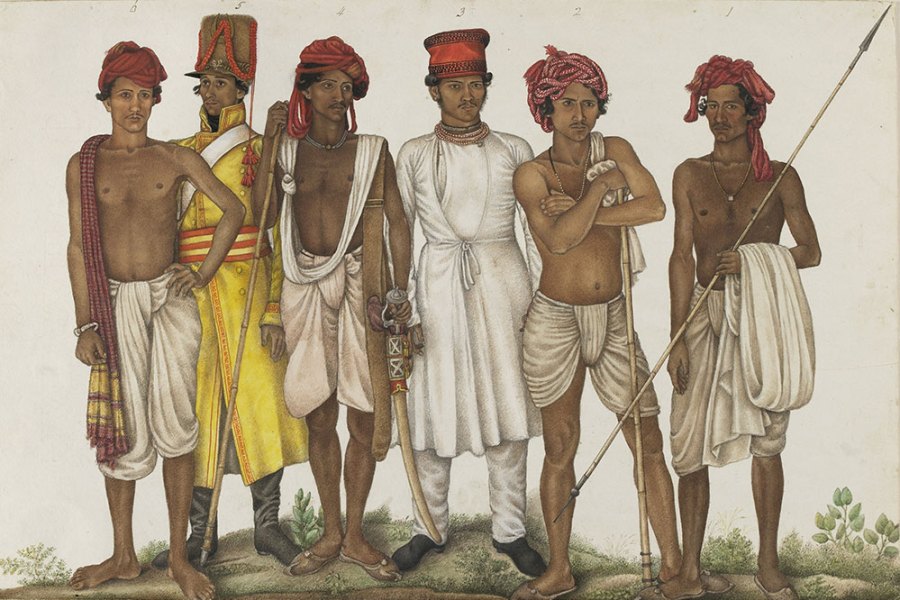
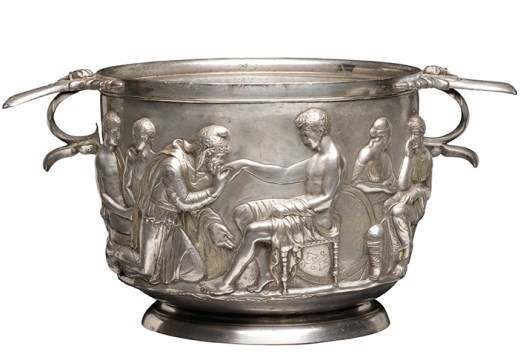
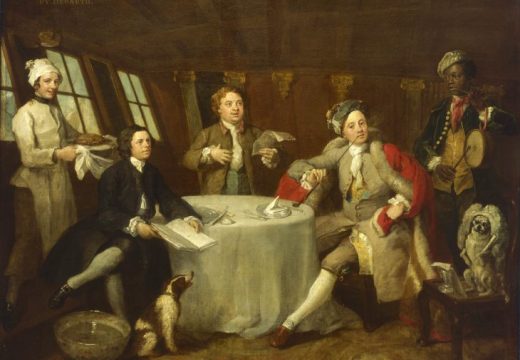
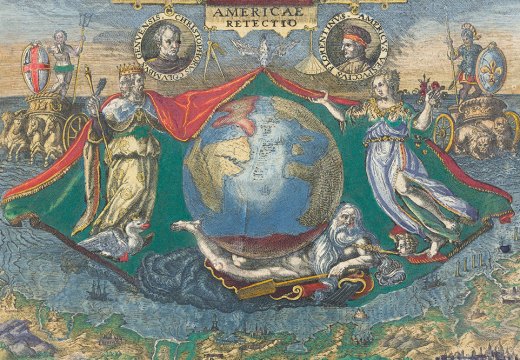









![Masterpiece [Re]discovery 2022. Photo: Ben Fisher Photography, courtesy of Masterpiece London](http://www.apollo-magazine.com/wp-content/uploads/2022/07/MPL2022_4263.jpg)
Has the Fitzwilliam got its rehang right?